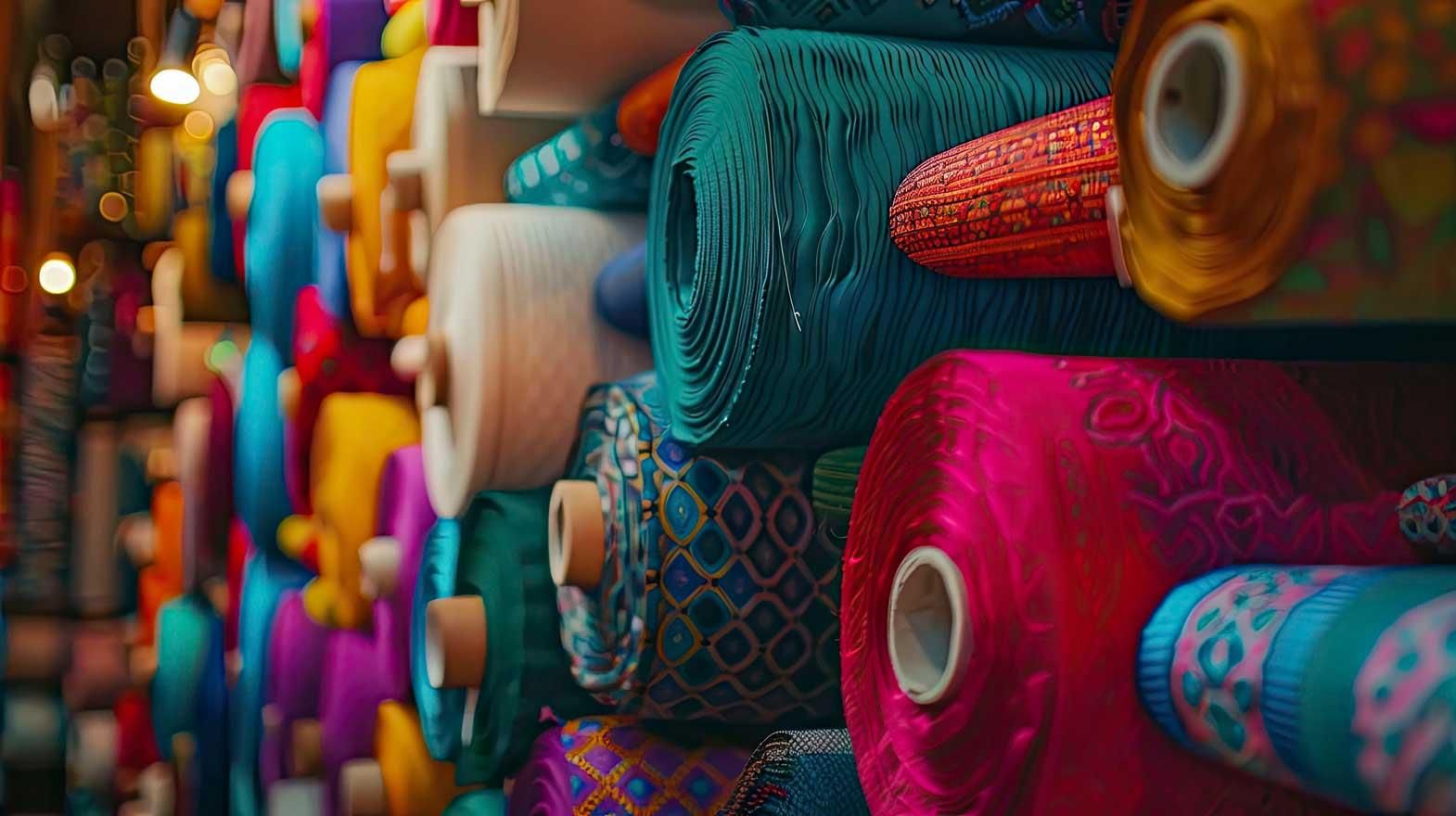Poplin is made with a plain weave. Poplin describes the weave rather than the fabric itself. Poplin has very fine, closely spaced, crosswise ribs and contains a heavier filling yarn and several warp yarns. So when manufacturers mention poplin shirts, it is a reference to the kind of weave in the shirt, not the fabric. It mostly includes the cotton weave, which imparts sturdiness to the fabric. Poplin is similar to broadcloth, which also has fine and closely spaced ribs.
Earlier, poplin was made with silk yarn warp and a heavier filling of wool, but today, cotton and synthetic yarns are also used to create poplin fabric. This fabric is used for shirts, pants or pajamas, women's wear including dresses and tops, sportswear, rich upholstery, and also as a fabric in decorative items like frames and wall hangings. Poplin fabric is easy to maintain and does not wrinkle easily.
In comparison to several rich fabrics, poplin fabric is reasonably priced, making it a preferred choice for designers and garment manufacturers. This fabric is produced all around the world; however, the preference for blends depends on the natives of a nation. In countries where the temperature is cooler, heavier yarns like silk and wool are used in poplin fabric to produce heavy winter clothing including overcoats and warm pants.
Poplin fabric has a very smooth finish, achieved by the careful crossing of warp and weft yarns, imparting the fabric with a smooth hand feel and an even surface. Many designers incorporate poplin into making clothing required for regular wear, as poplin is durable, strong, and easy to maintain. It is one of the top choices for making team uniforms due to its unmatched elegance and reasonable price.
Polyester poplin is popular in countries like the USA and Europe. These countries also offer good quality organic poplin. In countries like India and Bangladesh, cotton poplin is all the rage among consumers and designers. Cotton poplin feels light, cool, and crisp against the skin, and the traditional weave allows the skin to breathe easily, making it a perfect choice for summers.
One hundred percent polyester poplin has also gained recognition in recent years. It is an extremely efficient material, with a bit of firm drape along with a horizontal rib weave. This fabric is heavy and lasts longer than cotton poplin fabric. Designers are experimenting with colors that enhance the attractiveness of poplin fabric. The versatile colors ensure that poplin garments can be worn on any occasion.
The cent percent poplin fabric is also used for medical purposes. The polyester poplin is not only wrinkle resistant, but it is also flame resistant, making it a suitable choice of clothing in certain professions. In countries like United Kingdom, France, United States etc. polyester poplin is often used to make office clothing. Organic poplin that uses organic cotton is also in trend in these countries, as the textile industry in these developed nations focuses on use of eco-friendly clothing. Apart from cotton poplin, silk poplin and polyester poplin, there is also stretchable poplin made from spandex. The poplin clothes can be simply washed in machine in warm water and can be tumble dried like regular clothing.
The textile world has been a witness to a continuous revolution with regard to fabric innovation and this has resulted in rise in demand of fabrics like poplin that when used with wool becomes suitable for colder weather and when used in combination with cotton is a perfect choice for summers. The designers and consumers both have shown an increasing appreciation for the well-made, affordable and workable poplin garments.
Nevertheless, poplin is still struggling to take a solid grasp at the market, as many designers and high end brands prefer linen or similar fabrics when it comes to summer clothing and there are richer fabrics like silk that can be used along with wool during winters. Though poplin has found its own clich market and loyal line of designers, but the way to top is not going to be easy for this fabric. There are likes of other fabrics that are in vogue as of now. Meanwhile, the experiments with blends to create a more functional poplin fabric can guarantee a bright future to this fabric. Poplin's journey has been interesting so far and it is gradually catching attention of the global market.
References:
1. Wikipedia.com
2. Info.fabrics.net
3. Nyfashioncenterfabrics.com
4. Shirtdetective.com








Comments